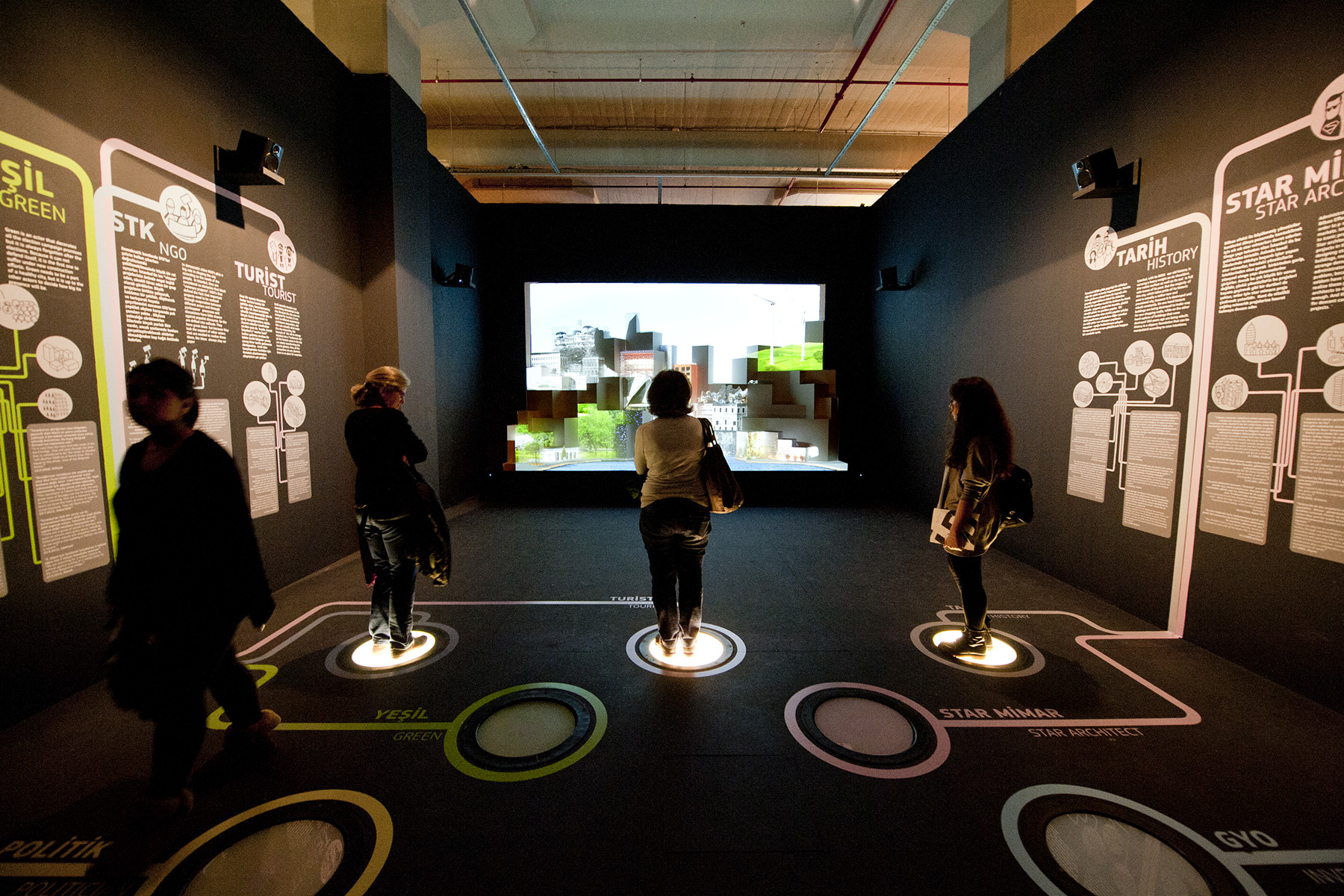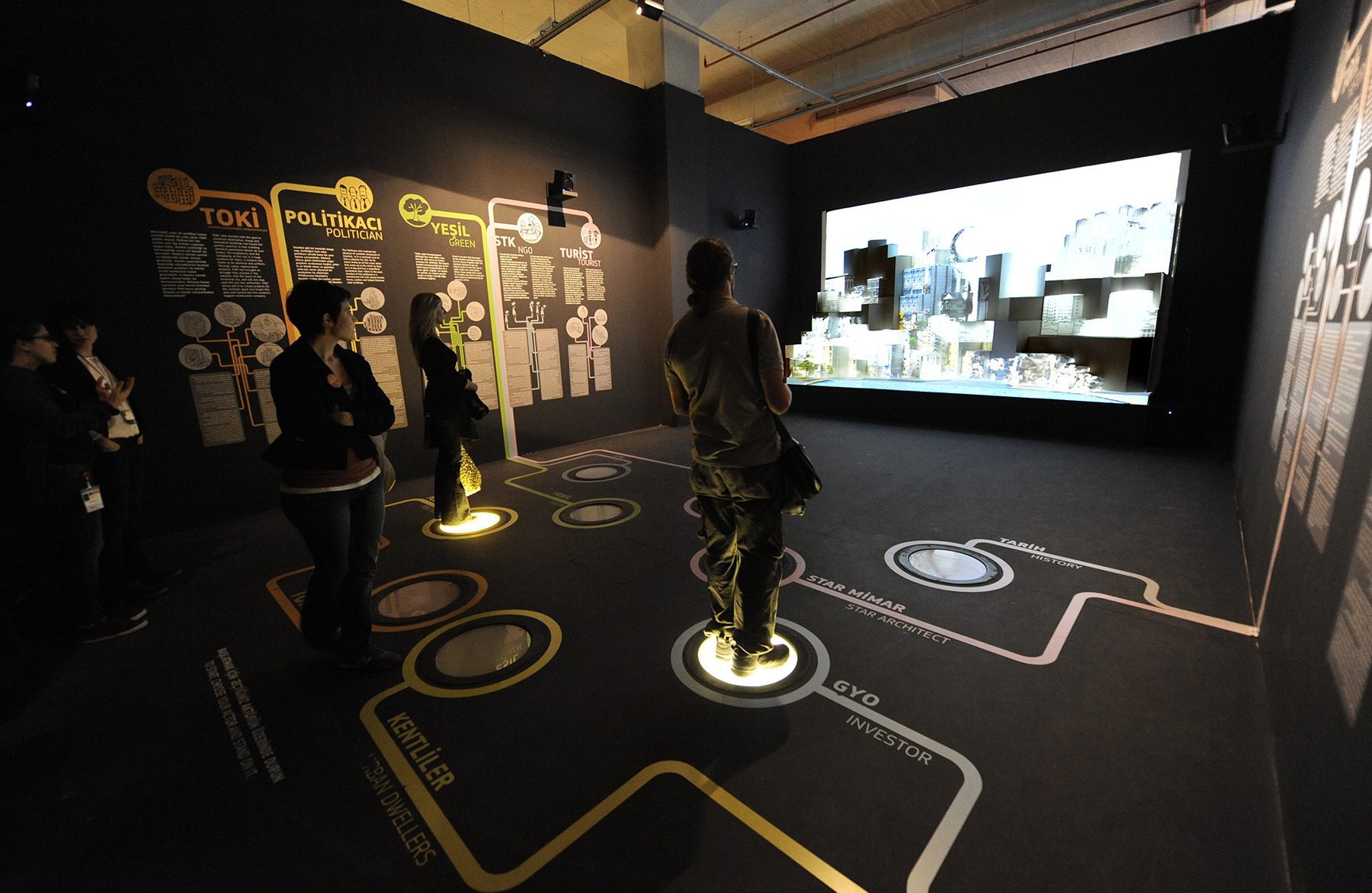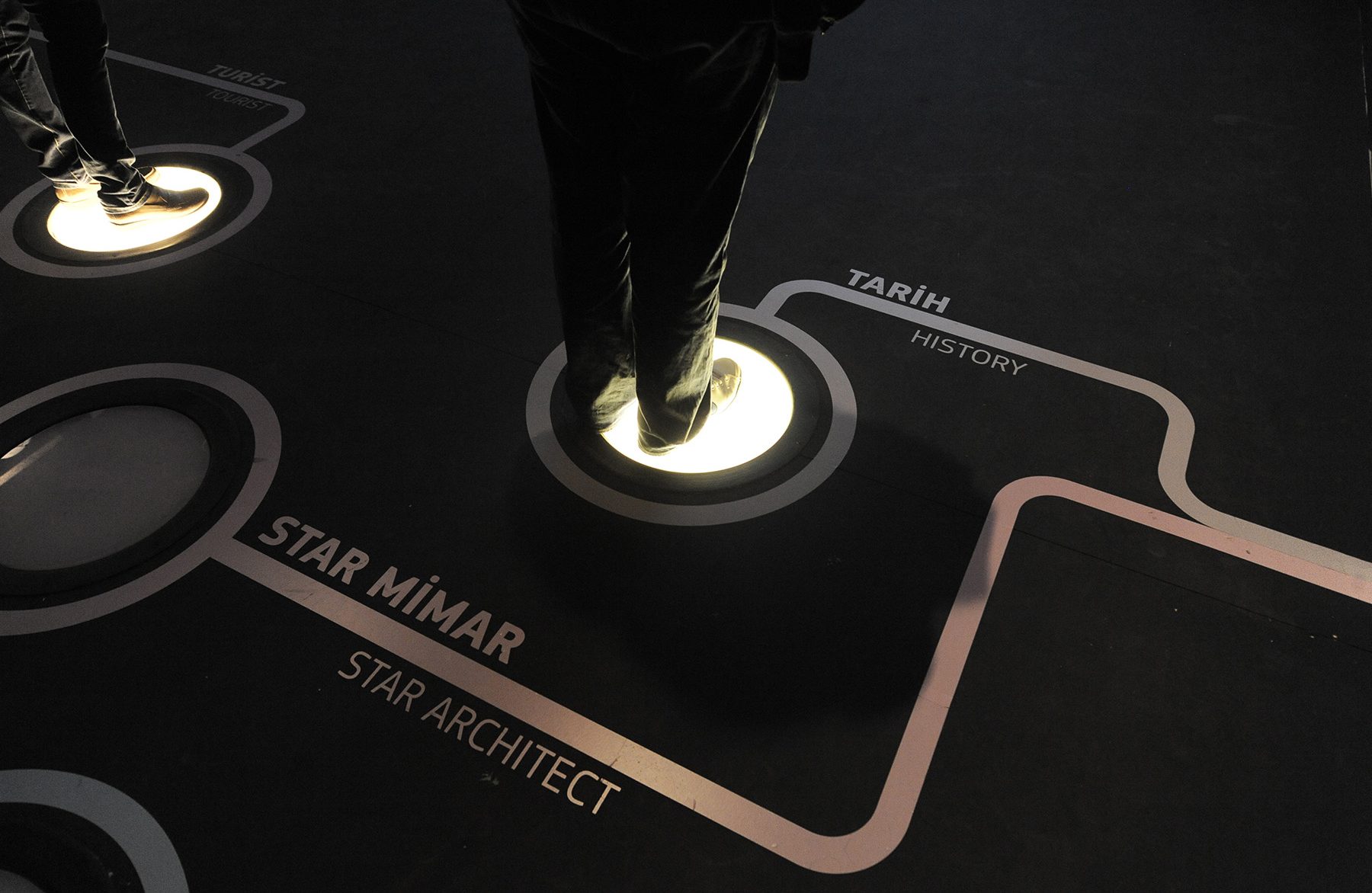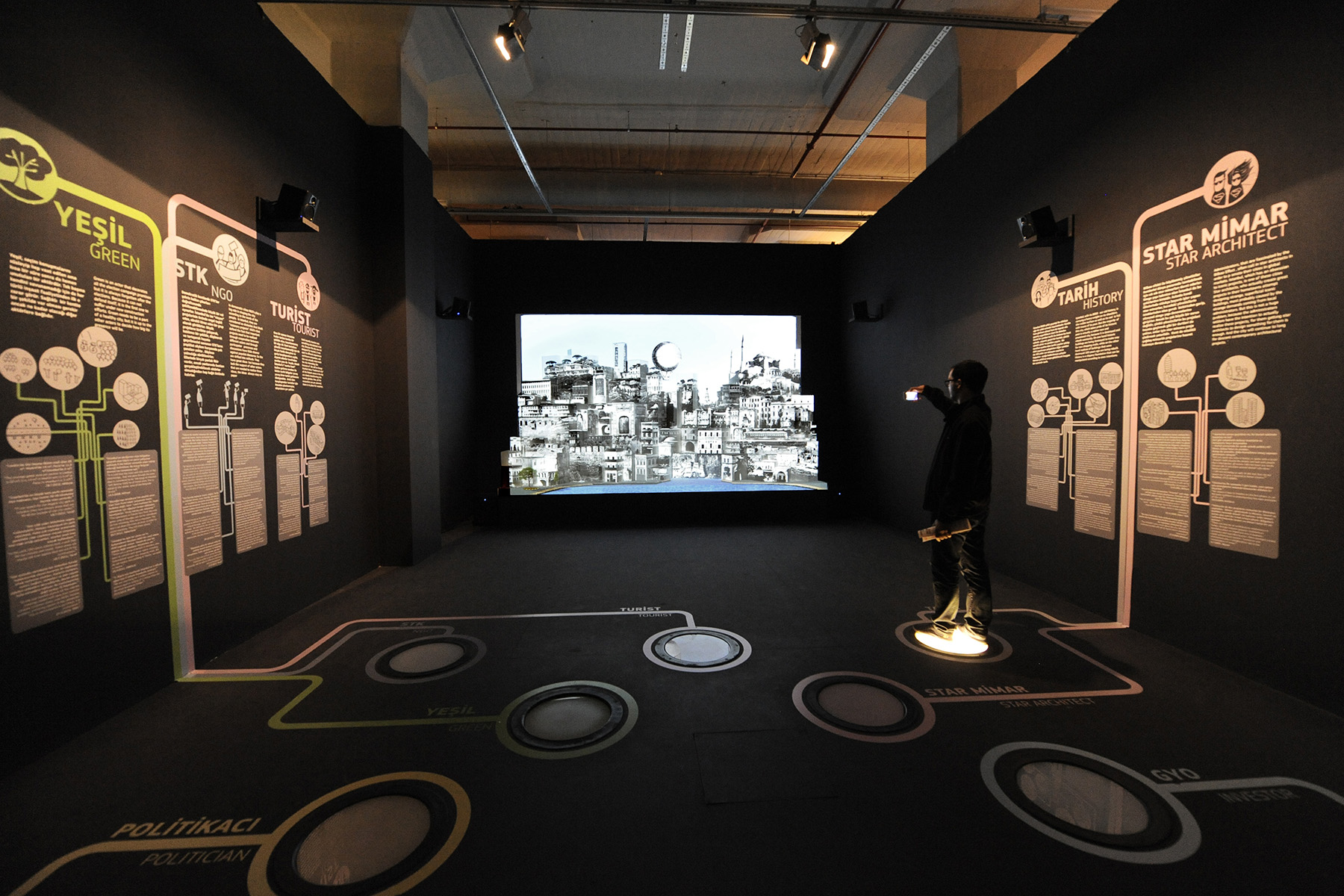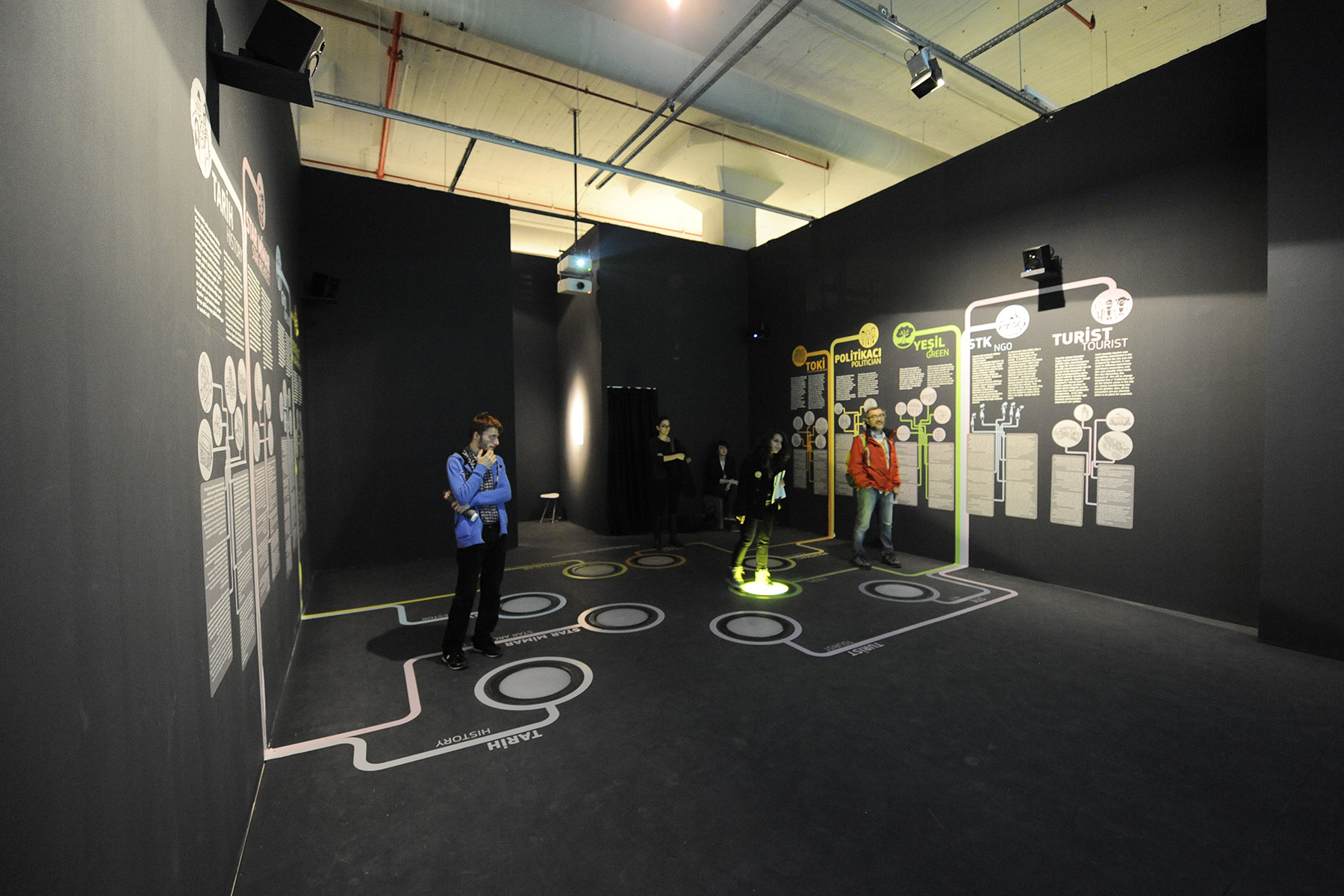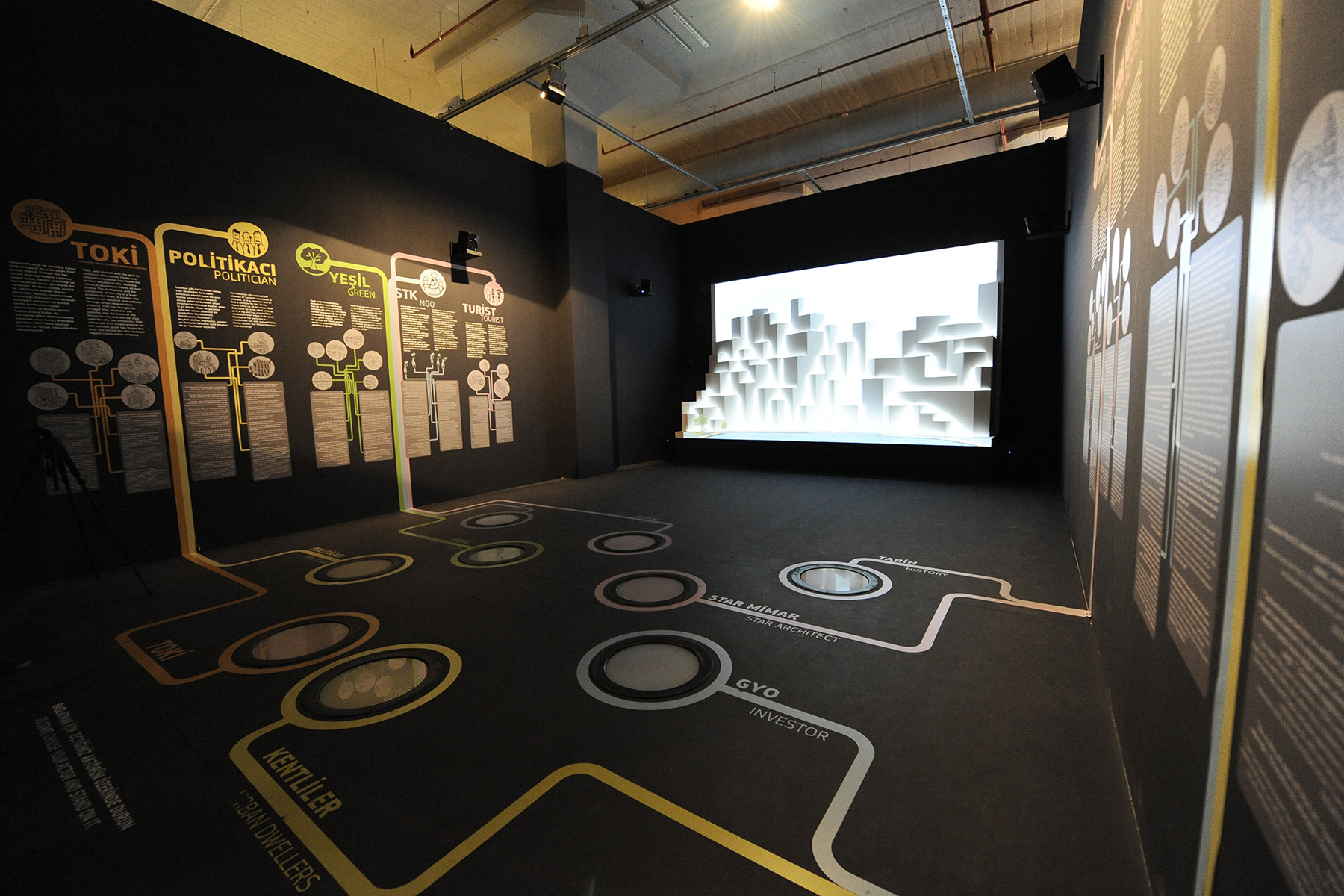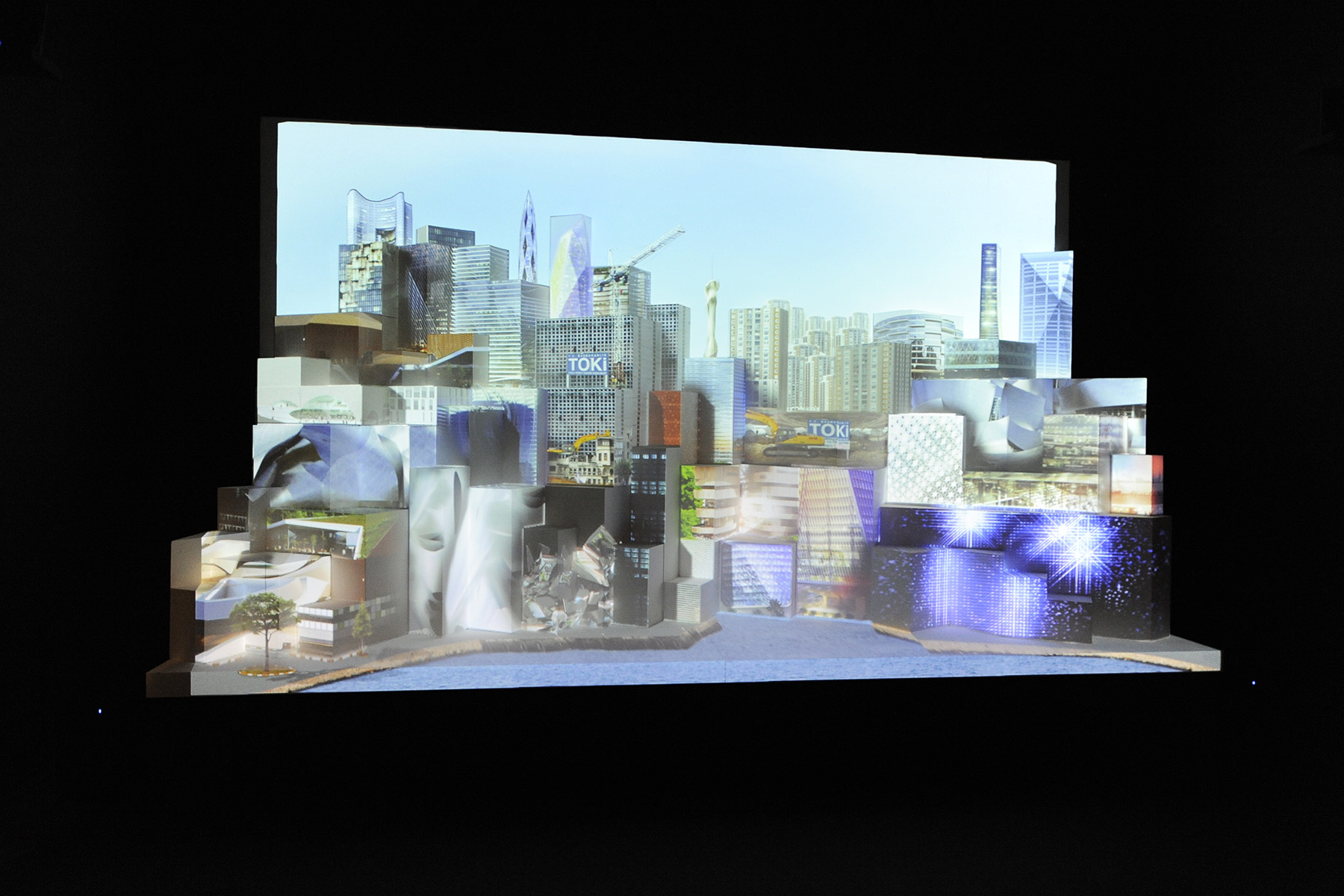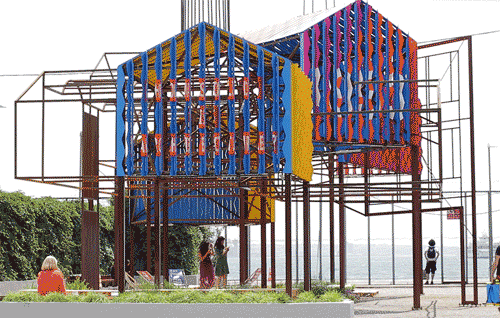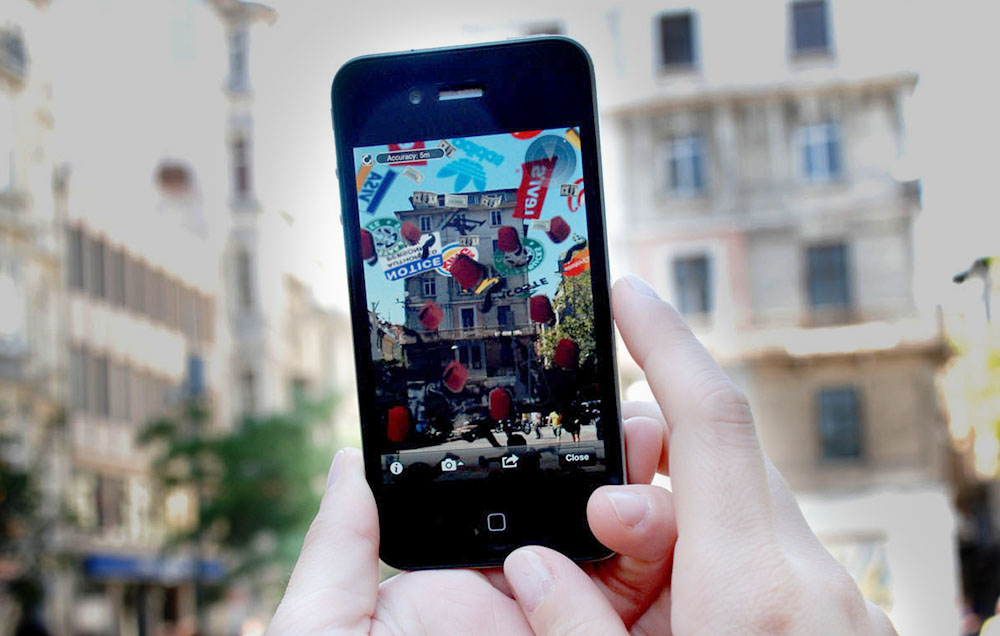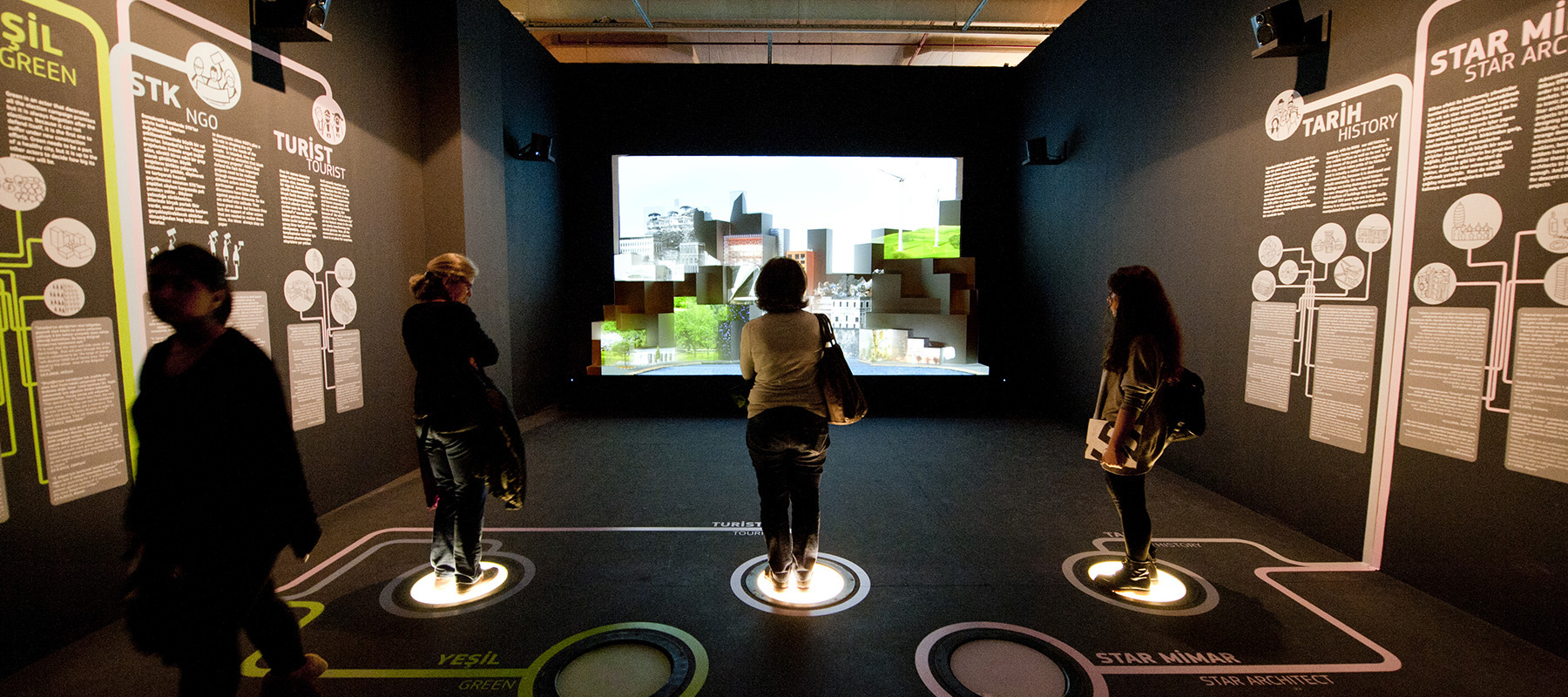
Istanbul-o-matic
Scope of work:
Architectural research, Interactive installation design and graphic design
Client:
IKSV
Area:
70 m2
Until the millennium, Istanbul tried to solve its transportation, housing or food problems through small entrepreneurs with informal solutions, but since a few years, the city has started to integrate to the global economic network, and this “self-service city” started to fade away. The old and decaying houses that also had lively urban microsystems are being replaced by TOKI apartment blocks that lack imagination or urban character, the dolmuş, which started as an ad-hoc solution to the lack of public transportation is being banned, the small grocery store that was accessible on foot is being replaced by supermarkets that are only accessible by car.
Urban space in Turkey is nowadays shaped by the ambitions of politicians and big investors. The participation of urban dwellers, small actors or NGO’s in the creation of these new urban spaces is already very limited, and they are being passivized even more by creating governmental institutions that can bypass any objection or participation. This new situation in which just a few actors enjoy almost unlimited power over the city is in stark contrast with a contemporary metropolis, which should celebrate multiplicity and compromise.
The field is clear for these few actors that have a strong self-confidence (as well as legal support). Crazy, strange and sometimes cartoonish ideas and proposals start to shape the city. Istanbul-o-matik is an interactive game that starts from this phenomenon. It is in interactive installation on which visitors can experience how different actors (that shape, or should shape the city) effect an imaginary piece of Istanbul.
The game works like this: on the floor of the room you can see the signs of different actors/dynamics like TOKI, investors, urban dwellers, star architect, mayor, tourists, history, NGO’s and environmentalists. While in front of you, there will be an imaginary piece of Istanbul. When you step into the shoes of these actors, the actor will start to effect the city. Just one actor has always crazy, almost cartoonish ideas, “ideal cities”. So if there is only one visitor, standing on only one actor, this actors crazy idea will start changing the city projection in front of you. For example if you are standing only on TOKI the whole city will turn into high rise apartment blocks that look the same. If there is another visitor in the room, standing on another actor, these two actors will start interacting creating a new scenario for the city. If there is another visitor, then 3 actors will interact… The more actors involved, the more diverse it gets. But the installation is not aimed at creating an ideal prescription to build cities, it is rather criticizing the top down decision making processes in which everything is agreed upon behind closed doors. The contemporary city needs to be shaped by a broad participation that includes many different actors.
In the process of creating the interactive video based project, different teams worked together such as architects, programmers, motion graphic designers and sound designers . For projecting the realtime visuals and sounds in synchronization on the object, a spesific code has been created to transfer over 500 MB data in one second. Over 90.000 images are played as realtime video with the programme and over 650 sounds and videos are designed to be played in synchronization and random.
All the visuals in the installation were created by processing thousands of images, videos, projects, promises and crazy ideas.
